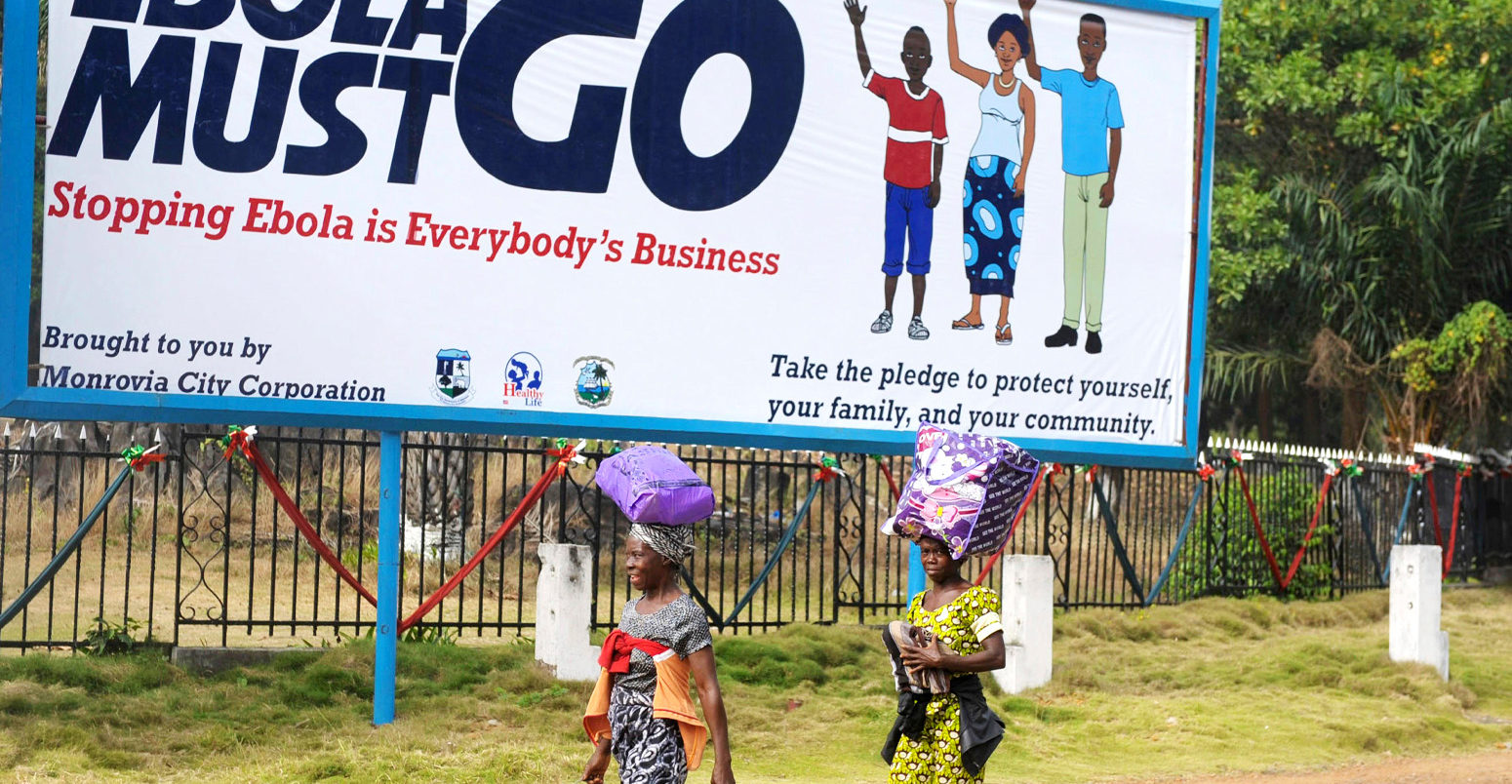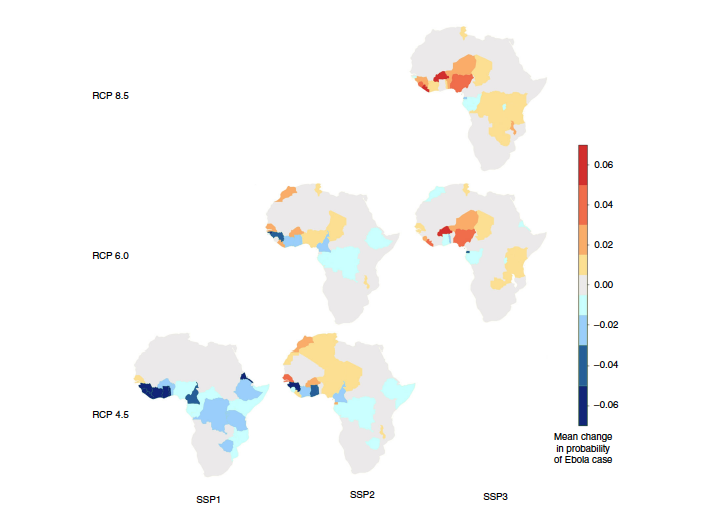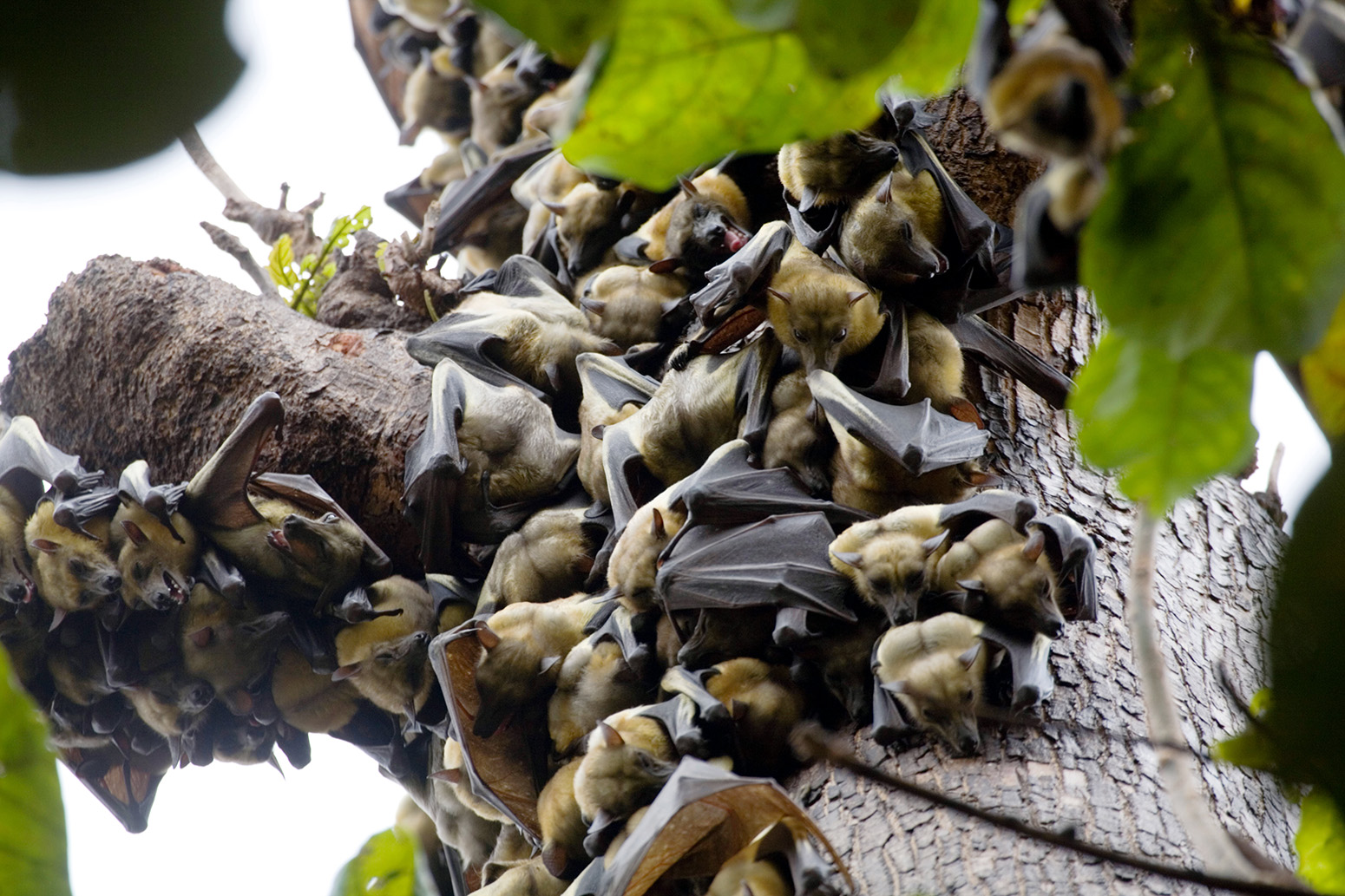
Ebola epidemics will ‘increase with greenhouse gas concentrations’, study finds
Josh Gabbatiss
10.15.19Josh Gabbatiss
15.10.2019 | 4:00pmThe threat of Ebola outbreaks across Africa will increase as levels of greenhouse gases in the atmosphere rise, according to new research.
With warming temperatures, bats and other animals that are thought to transmit the virus to humans are expected to move into new areas, bringing the disease with them.
The new modelling suggests that by 2070 epidemics could break out, on average, once every 10 years, if rapid population growth and slow development are accompanied by inaction on climate change. Under today’s conditions, the average is once every 17 years.
According to the analysis, published in Nature Communications, changing conditions may also affect regions of West and Central Africa that are not currently considered at risk.
The paper concludes that with current rates of economic growth and high emissions, the total epidemic-prone area could expand by a fifth. At even higher levels of emissions, it could expand by a third.
The scientists behind the work say their modelling, which was undertaken in 2018, has already successfully predicted the outbreak currently underway in the Democratic Republic of Congo that has claimed more than 2,000 lives.
With this in mind, they say the analysis should lay the groundwork for targeted Ebola vaccine programmes and healthcare infrastructure in Africa, including regions previously thought to be unaffected.
Modelling everything
First identified in 1976, Ebola made headlines around the world in 2014 when an outbreak of epidemic proportions killed thousands of people in West Africa.
The viral disease is thought to pass to humans from bats and other animal hosts in so-called “spillover events”. It is one of the many “zoonotic”, or animal-borne, diseases that make up two-thirds of all human infectious diseases.
Once spread to humans, Ebola can be transmitted from person to person through direct contact. Symptoms in humans include fever, vomiting and sometimes both internal and external bleeding. The average fatality rate is around 50%.
Given its potential to inflict significant harm, it is vital that scientists understand when and where the next outbreak of Ebola is likely to strike so that medical resources can be directed accordingly.
However, as there have only been around 23 confirmed outbreaks since the disease was discovered, traditional methods used to predict common infections, such as flu, are difficult.
Instead of working from previous outbreak data, Dr David Redding of University College London, along with his colleague Dr Kate Jones and their team, developed an outbreak risk model “from the bottom-up”.
They used data on a range of factors including host distribution, human population size, people’s movements by roads and air, and land use.
Prof Matthew Baylis, who leads the Climate and Infectious Diseases of Animals group at the University of Liverpool and was not involved in the study, tells Carbon Brief that combining all these factors into a model is “extremely complex”. “Therefore, I am impressed by this work,” he says.
One vital component of the analysis was climate change, which can influence disease spread both by affecting both local socioeconomic development and, as Redding tells Carbon Brief, the host species themselves:
“In our model most of the climate effects are through better conditions for the disease-carrying species, thus increasing their native geographical range.”
While there is still some uncertainty about precisely which animals pass Ebola on to humans, the prime suspects are large fruit bats that are often hunted for bushmeat. These creatures are known to prefer warm and wet habitats, which are expected to expand in the target regions as the climate changes.
Other animals thought to provide alternative routes for infection, such as apes and duiker antelopes, were also considered in the analysis.
The researchers note that climate played a less important role in their observed outcomes than poverty – which is closely tied with healthcare response – and human population size.
However, they also note that spillover events “increased with greenhouse gas concentrations”. Redding explains:
“There is a positive association in our model results with increasingly more negative impact with higher emission scenarios.”
Epidemic expansion
The researchers developed a model that simulated animal-to-human and human-to-human transmission of Zaire Ebola virus (EBOV), the strain responsible for the West African epidemic.
In order to gauge the impact of complex social, economic and climate factors on future Ebola transmission in Africa, the team then incorporated representative concentration pathways (RCPs) and shared socio-economic pathways (SSPs) into their modelling.
RCPs broadly represent scenarios with ever-higher levels of greenhouse gases resulting from different levels of climate action. SSPs are for various socioeconomic development scenarios, involving different outcomes for global society, demographics and economics.
(For more, see Carbon Brief’s recent explainer on RCP8.5 and Carbon Brief’s SSP explainer.)
The researchers then used these models to project changes in Ebola risk across different African regions by the year 2070.
Writing in their paper, they say their simulations suggest a “general, ongoing increase in Ebola incidence over time” for most scenarios.
However, for scenarios involving sustainable development and extensive climate mitigation, there was a general decrease in Ebola risk (the chart below gives an idea of changing risk in different scenario combinations).

Change in future risks of Ebola virus disease under different RCP and SSP scenarios. Each map represents mean change in “per grid cell probability” of an Ebola case from zero (yellow) to −0.06 (dark blue) and 0.06 (red), aggregated at a country level with data from the group’s model for 2070. Source: Redding et al. (2019)
Under current conditions, the models predict an epidemic resulting from a spillover event will occur roughly once every 17 years. An epidemic was defined as an outbreak involving more than 1,500 patients.
To arrive at this conclusion, the team ran around 1,500 yearly simulations using present day conditions and found that epidemics occurred in approximately 5.8% of them. This process was then repeated using different sets of conditions.
The greatest increase occurs in a scenario with high emissions, high population growth and slow economic development (RCP6.0 and SSP3), with epidemics expected to occur nearly once every 10 years.
(The likelihood of epidemics occurring under these conditions compared to present day was incorrectly described as four times more likely, instead of 1.6 times more likely, in the paper’s original abstract. The authors confirmed this after Carbon Brief contacted them about the discrepancy.)
Under the most optimistic of the scenarios they used – which assumes moderate emissions and high development (RCP4.5 and SSP1) – the occurrence drops to roughly once every 30 years.
A similar pattern is expected to play out for “catastrophic epidemics” affecting more than two million people. These events are currently predicted to take place once every 43 years, but the modelling suggests they will increase in frequency under high-emissions scenarios.
The models also predict an expansion in the area at risk from outbreaks. For example, under the most optimistic socioeconomic and climate scenario, the total area where epidemics could start decreased by nearly half compared to present day (0.4m square kilometres, km2, compared to 0.8m km2).
In comparison, in a scenario involving low climate mitigation and “middle of the road” development (RCP6.0 and SSP2), this area increased by 20.5%, Under a more extreme scenario (RCP8.5 and SSP3) this increased further, by 34%.
Disease and climate
While other scientists have considered the links between climate and Ebola, Redding and his co-authors think this is the first attempt to model future transmission of the disease that takes climate change into account.
Baylis says there has been extensive work exploring direct links between changing climate and the spread of disease – for example, rising temperatures in the Kenyan highlands and malaria risk.
However, while work from his own group has suggested about two-thirds of infectious diseases are susceptible to climate, he says identifying these links can be challenging:
“Attribution is difficult, because we are really saying that climate change increases the probability of an event, but extreme events are expected even without climate change.”
It is worth noting that while many infectious diseases are transmitted via the environment (by way of water or soil, for example), Ebola moves via direct contact between hosts. This means while bats and humans are affected directly by the changing climate, the virus itself is less susceptible to a changing climate.
The paper concludes that global commitments to tackle climate change may drive down Ebola cases. However, it is not optimistic about this outcome, noting “evidence suggests a wholesale change is unlikely”:
“Efforts to decrease poverty in Central and Western Africa with a concomitant increase in healthcare resources, therefore, would appear to be the most realistic approach to reducing future Ebola virus disease risk globally.”
Future response
Besides accurately identifying the known endemic area for Ebola, the modelling also identifies countries such as Nigeria, Ghana and Kenya as vulnerable to both small spillovers and epidemics of Ebola, despite never having been the source of such outbreaks before.
The team says their approach “somewhat contradict[s] analyses based on current case data”.
According to Baylis, the team’s validation of past outbreaks using the new approach increases confidence in future predictions, but notes the models are still “likely constrained by the quality of our knowledge of Ebola hosts, which is not high”.
Besides identifying a “much larger” area within Africa that is vulnerable to spillover events, the team also incorporated information about airline routes and concluded that China, Russia, India, the US and many European countries were at risk of importing the disease.
According to Redding, their work “acts as a call” for both a better understanding of where Ebola outbreaks could hit, plus the need for cooperation between wealthier and poorer countries to improve healthcare resources in preparation. He concludes:
“Such an approach is a no-lose situation as better containment facilities and barrier nursing, for example, could protect nations and their neighbours against many different future disease outbreaks, not just Ebola.”
Redding, D. et al. (2019) Impacts of environmental and socio-economic factors on emergence and epidemic potential of Ebola in Africa, Nature Communications, doi.org/10.1038/s41467-019-12499-6


